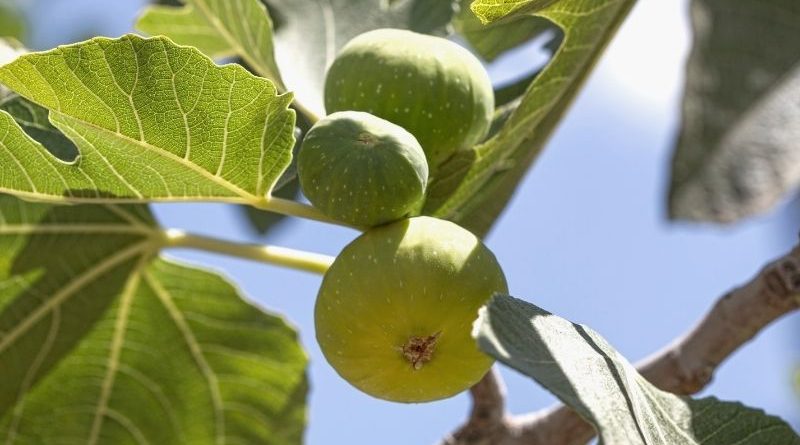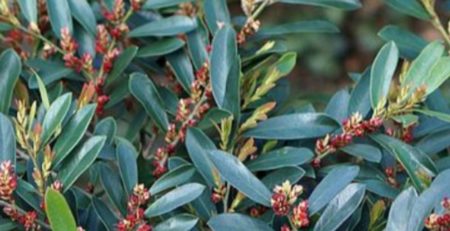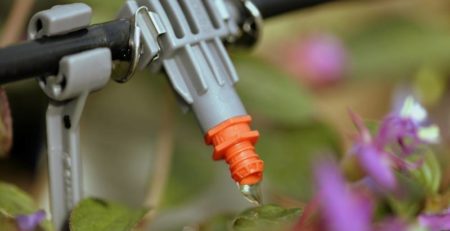Yes! You Can Grow Figs In North Texas
Huge doesn’t begin to describe the fig tree in Stephen Seewoester’s (DCMG 2015) backyard in Carrollton. His 25-year old tree is a behemoth that goes by the varietal name of Celeste. Spanning 30 feet at her peak height in 2020, she was big enough to hide gardening tools, an old patio table, and 30 or more bags of leaves which Stephen uses for composting.
Stephen’s figs ripen over a three-week period in July, usually starting on July 4. “We call it Magic Day,” said Stephen. His wife Mary Lou said they never plan out-of-town trips during harvest season. Stephen picks figs at dawn to beat the birds and the heat. In summer 2020 Stephen and Mary Lou harvested 150 pounds of figs. “That’s what I can reach on a ladder,” said Stephen. “The birds get the rest.” In summer 2021, production was very low because the tree froze back. Fortunately, it is rebounding.
Figs do not store well nor do they ripen off the tree, perhaps explaining why store-bought figs are so expensive and bland. The fresh figs we purchase in grocery stores have been picked early so they can be shipped from California to Texas. The solution to ho-hum figs? Have your own source in your backyard. Chad Spurlock, a fig aficionado and creator of the Facebook group, North Texas Vegetable Gardeners Community, recommends consuming figs this way: “Pull them off the tree and get to chomping. Fresh is best. I let them get extremely ripe.”

FUN FIG FACTS
They’re old, really old. Figs may be the first food cultivated by humans, dating to 9400 BC to 9200 BC.
Frankenfig. The name for a single fig tree onto which several varieties have been grafted. This is a helpful strategy where space is limited or when a good root stock will boost an otherwise untested variety.
Just Newton, ma’am. Fig Newtons are now called Newtons and come in flavors other than just fig. The Mission fig is the variety used to make the paste that goes into those iconic fig cookies.
A fig by any other name. An enterprising school lunch manager in Florida began calling dried figs “Texas raisins” to make figs more appealing to school kids. It worked.
Act fast. Figs do not continue to ripen after harvesting, so they must be harvested when dead ripe. Harvesting figs with the stems on will slightly extend their brief shelf life. Figs should be refrigerated right away and eaten fresh, or preserved within three to five days of being harvested. See Mary Lou Seewoester’s recipe for Spiced Fig Preserves.
Good Book mention. “Each man under his own vine and fig tree” is an expression from the Bible wishing peace and prosperity. George Washington used the phrase to support the equality of all Americans regardless of faith. The full verse was recited by a young speaker at the most recent presidential inauguration. A more complete discussion of the verse can be found at biblehub.com.
Preserving the bounty is key to prolonged enjoyment of these bursts of flavor beyond their brief ripening season. Mary Lou makes jam and pies. Some of the Seewoesters’ figs go straight from the tree to the freezer where they are stored whole in bags, “like a Popsicle,” said Mary Lou. Her spiced fig jam is a favorite (recipe below). “Whenever we go somewhere, we bring fig jam.”
In most years, a large Celeste tree commands a stately presence in the backyard of another Dallas County Master Gardener, Jim Dempsey (DCMG 2007). “If you like figs, you can’t do better than Celeste,” Jim remarked. He’s a retired forensic chemist who said his Celeste fig tree has thrived for more than 40 years with no chemicals and no fertilizer. His tree has frozen to the ground several times, including February 2021, and grew back from the roots. He purchased his tree from Womack Nursery in DeLeon, Texas.
North Texan Audrey McDermott is a relative newcomer to the fig world. Her fig addiction, er, fig affection began in 2019 when she bought her first fig tree from Tractor Supply. As with Stephen and Jim, Audrey’s first fig was a Celeste. Her interest in figs didn’t stop with a single tree. Thanks to the generosity of other figgers, and boosted by some smart trades and careful purchases, her collection of fig trees and cuttings has grown to 30 varieties.
“I was lucky enough to get a generous trade,” said Audrey of an exchange she made at the start of her dive into propagating figs from cuttings. “I got off to a good start with rooting practice,” she said. Audrey recommends choosing varieties that grow well in-ground “unless you’re willing to haul pots into a greenhouse or garage in the winter.” The February 2021 freeze dealt a huge blow to her young containerized trees. She brought them indoors but power outages caused them to freeze.
Perhaps the best news for Texas fig lovers is that they’re easy to grow in most parts of Texas. Tim Hartmann, PhD, Program Specialist: Earth-Kind®, Texas A&M AgriLife Extension, has several recommendations about caring for fig trees. He advises fig tree owners to remove growth in the middle of the tree to improve air flow and reduce the risk of rust. This will also promote fruit production throughout the canopy.
He also recommends keeping weeds at bay. This is especially important for figs because they have a shallow root system. Another tip: “Mulch the heck out of them, four to five inches.” Finally, Celeste again emerges as the favored variety in our area. Tim describes Celeste as our best bet.
Local nurseries stock very few varieties of fig trees, typically old standards such as Brown Turkey and Celeste. However, many of the several thousand varieties of fig trees grow well in Texas, so what’s an adventurous fig grower to do? Jump on the internet.
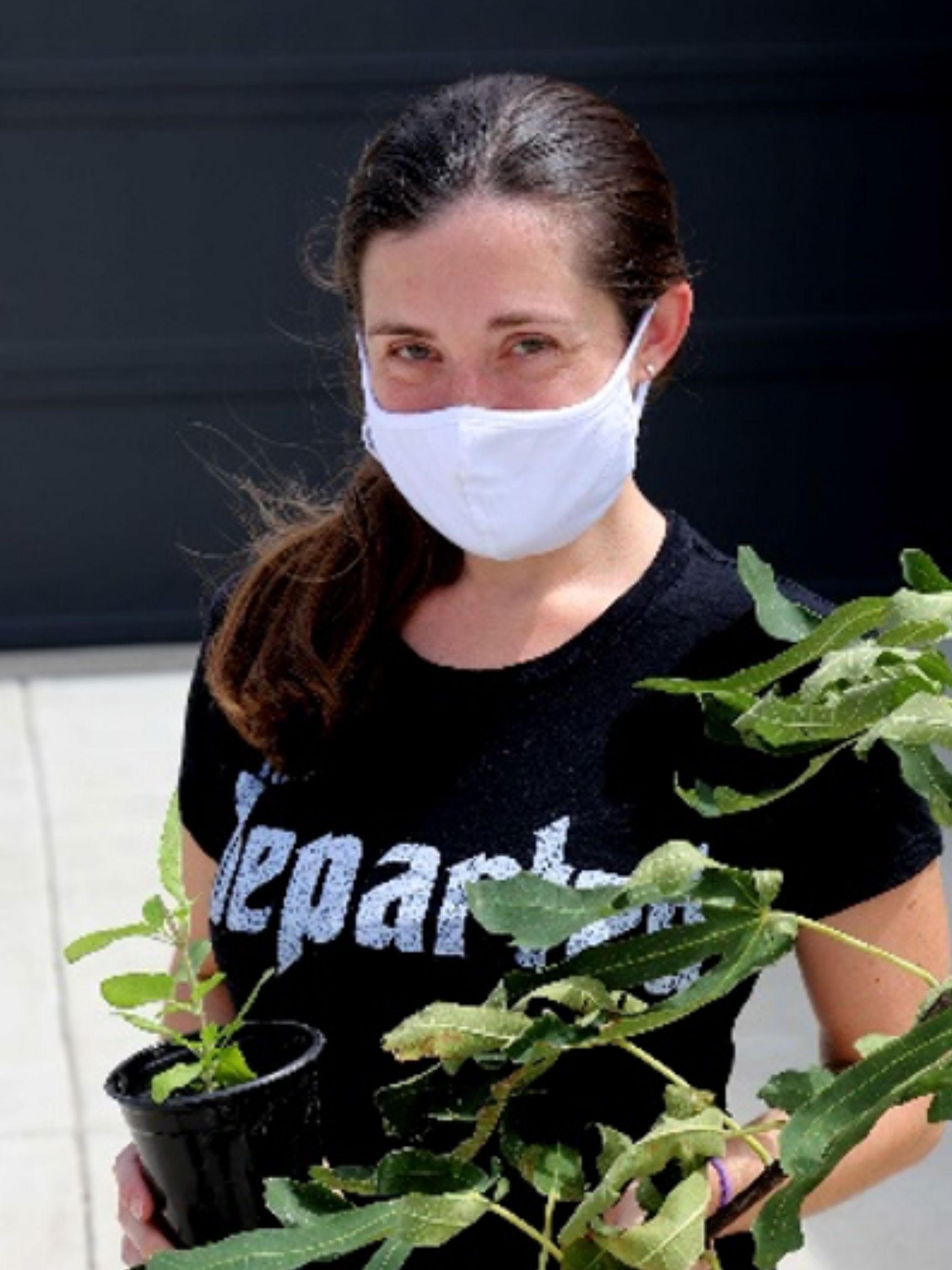



Left to right: Audrey McDermott, Tim Hartmann, Ph.D, Chris Coombs (who passed away earlier this year), and Dallas County Master Gardener Jim Dempsey.
Daniel Gentile, the creator of FigBid.com, credits the internet with the increased interest in collecting and growing a wide variety of figs. FigBid is a trusted online marketplace where buyers can pay a few dollars to thousands of dollars for a cutting or a tree. “Now buyers and sellers from around the U.S. are connected instantly,” said Daniel. His Buying Fig Trees and Cuttings Online guide will help a gardener make an informed fig buying decision. An online list of nurseries that sell figs is maintained by Ben B. His blog is an excellent source of information.
Another popular online source of hard-to-find varieties is a yearly cutting sale by trusted fig guru Harvey Correia. Harvey shares his fig-growing wisdom on YouTube, where you can learn about dozens of different varieties, including their taste, productivity, and preferred growing conditions. He maintains a list of the cuttings that he’ll offer in January on his website Figaholics. Be ready to act fast. Some varieties sell out within minutes.
Sources to avoid include some sellers on EBay and Etsy. Unscrupulous sellers offer “must have” varieties at too-good-to-be-true prices. Because fig varieties cannot be confirmed by looking only at leaves, accurate identification requires viewing the fruit. Fig trees often do not produce fruit the first couple of years, so discovering that a treasured and costly White Madeira #1 is really a Brown Turkey happens long after the sale, and too late to be compensated for the mix-up. Another caution is not to buy figs from sellers outside of the U.S. The practice is prohibited by the USDA.
Fig aficionado Chris Coombs grew more than 60 fig trees on her one-acre lot in Waxahachie. She shared her thoughtful gardening wisdom in Facebook gardening groups. Her trees flourished in the rich soil she built up over the past seven years with 40 dump truck loads of tree trimmings.
Chris offered a word of caution to new fig collectors. “Beware, though. As you learn more about the options available and the ease of propagation, you’ll become a figaholic like the rest of us.”
Don’t say that you haven’t been warned.
Mary Lou Seewoester's Spiced Fig Preserves Recipe

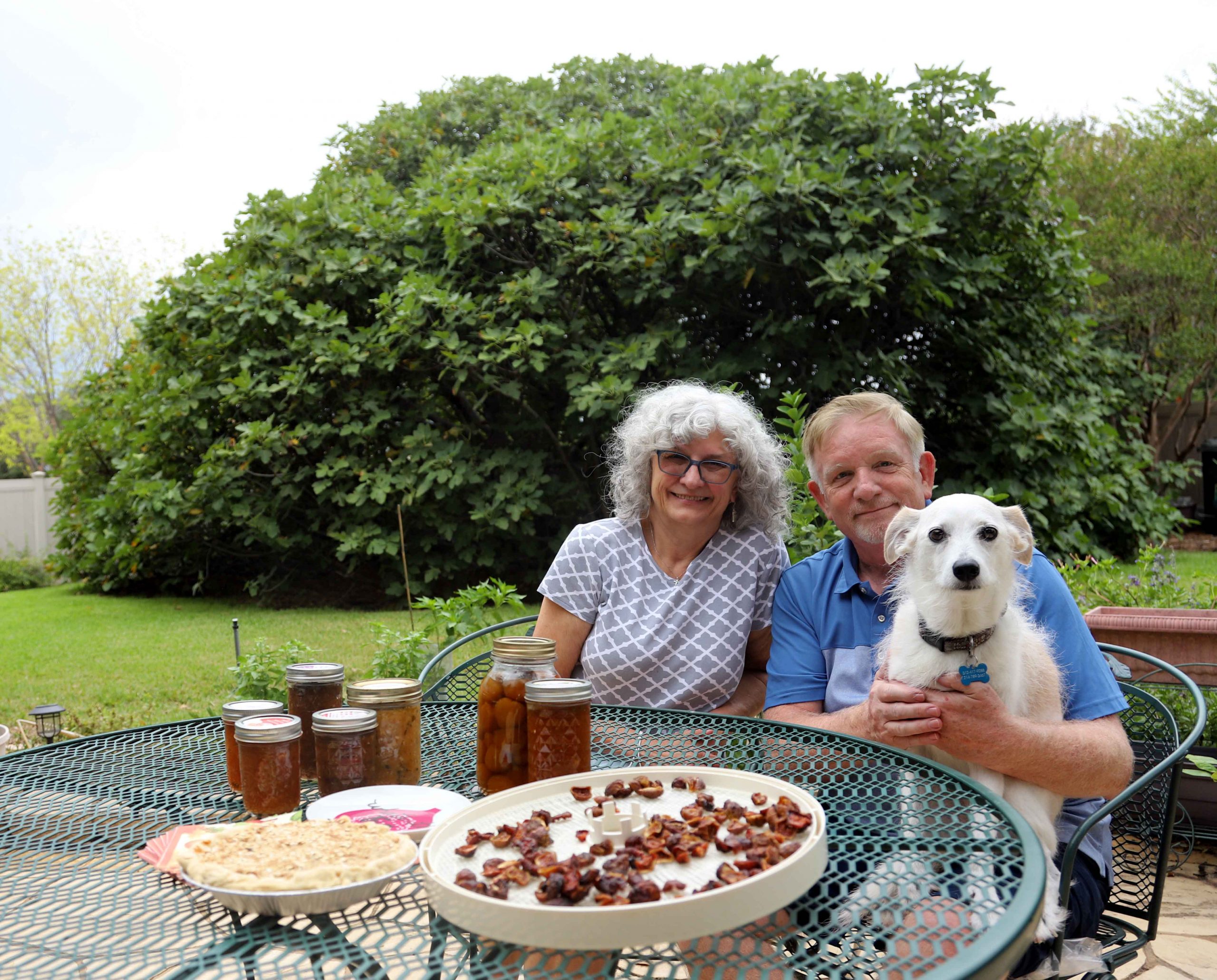
Ingredients:
- 1 lemon, washed and unpeeled, thickly sliced and seeded
- 8 cups chopped figs
- 6 cups sugar
- 2 three-inch cinnamon sticks
- 2 teaspoons peeled and grated fresh ginger
- 1 teaspoon ground cardamom OR freshly grated nutmeg-optional
Directions:
- Prepare jars by washing and putting them in a canner to boil. Prepare lids and rings by putting them in a pot of boiling water.
- Finely chop lemon in processor. Add figs. Using on/off turns, process until figs are coarsely pureed. Transfer mixture to a large, heavy saucepan.
- Add sugar, cinnamon sticks, ginger, and optional cardamom.
- Simmer until mixture thickens to jam consistency, stirring very frequently, about 20-30 minutes. (Use the metal spoon test to determine doneness.)
- Discard cinnamon stick. Divide hot preserves among hot, clean jars.
- Cover tightly and process in boiling water bath for 25 minutes.
Modified from a Bon Appetite recipe from its Oct. 1998 issue.


